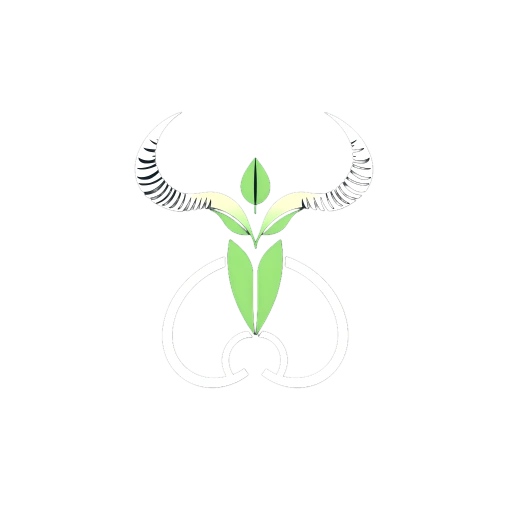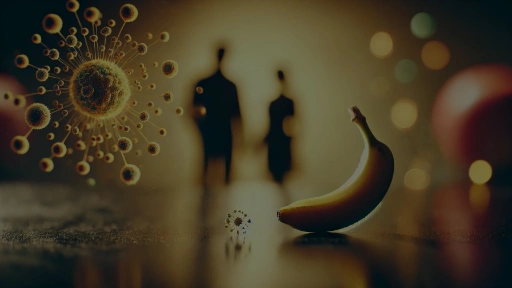There is a detail that’s often overlooked in the cuckold and hotwife dynamic. It hides behind the visual thrill, behind the hierarchy, behind the carefully curated erotic roles. It’s not about the chastity cage or the size of the bull or the denial ritual. It’s more subtle than that—and infinitely more ancient.
It’s timing.
Not his. Not hers.
Biological timing.
I’m speaking here of ovulation. Of the quiet hormonal rhythm that still pulses through the female body, even in modernity. A rhythm that, despite contraception, despite feminist re-education, despite centuries of religious domestication, still whispers an evolutionary truth that’s never quite gone silent:
At the peak of fertility, women are drawn to dominant men.
This is not a generalization. It’s not moral judgment. It’s not the resurgence of outdated stereotypes.
It’s neuroscience.
And in my work as a therapist and researcher, I’ve come to believe it’s also one of the most overlooked evolutionary anchors of the hotwife and cuckold dynamic. Because underneath the choreography of sexual submission and ritualized denial, the ancient machinery of human reproduction is still humming.
And sometimes, it pulls us into roles we think we’re choosing—but that may, in fact, be choosing us.
The Science of Ovulatory Shift
For over two decades, evolutionary psychologists have studied what’s known as ovulatory shift theory—the idea that women’s mate preferences subtly change during their fertile window, which typically occurs mid-cycle, around days 12–16.
During this phase, multiple studies have shown that women display increased attraction to men with indicators of genetic fitness: symmetrical facial features, deeper voices, taller stature, and more assertive behavior. They’re more likely to be drawn to dominant men, more aroused by sexual novelty, and more willing to entertain short-term mating strategies—even if they are in long-term partnerships.
One 2007 study published in Hormones and Behavior showed that women in relationships were more likely to fantasize about men other than their partner during ovulation—especially if their primary partner lacked “alpha” traits like assertiveness or sexual dominance.
These findings weren’t based on anecdote or personal bias. They were biologically driven, hormonally timed, and remarkably consistent across diverse populations.
What the data revealed was that women, like many other mammals, appear to possess a dual mating strategy:
- Seek stable, nurturing partners for long-term investment and parenting.
- Seek dominant, genetically fit men for reproduction—especially during the brief window when conception is most likely.
It’s not that women are deceptive. It’s that the body has its own logic.
And in that logic, the bull—so often painted as a symbolic figure in cuckold dynamics—may actually be something much older.
A fertility archetype.
From Evolution to Eros: The Bull as Primal Mating Cue
Most couples who engage in cuckold or hotwife dynamics don’t do so with a fertility calendar in hand. Ovulation is rarely tracked. Most are not actively trying to conceive.
And yet, the behavior patterns I see in clinical practice mirror the evolutionary blueprint.
Women in hotwife roles frequently report being more aroused by their bulls during certain times of the month—often coinciding with increased cervical fluid, breast sensitivity, and spontaneous desire. They describe feeling bolder, more aggressive, less emotionally careful.
Husbands notice it too.
“She’s different when she’s with him during those weeks,” one client told me. “Less concerned about me. More… primal.”
Another said, “She doesn’t even let me touch her around her cycle. It’s like her body belongs to someone else.”
These aren’t isolated anecdotes. They echo what the data shows: that during ovulation, women often become more open to risky sexual behaviors, more attuned to male dominance cues, and more willing to separate emotional attachment from physical pleasure.
Which brings us to the central contradiction of the cuckold dynamic:
At the very moment when a woman’s body is biologically primed to conceive with the most dominant male available, her husband is often in the corner.
Watching.
Waiting.
Serving.
And in that tension—between evolutionary programming and relational choreography—a new kind of intimacy is born.
Not despite biology.
But through it.
The Erotic Reframing of Reproductive Logic
Cuckoldry, in its consensual form, does something extraordinary: it takes a reproductive pattern designed for evolutionary efficiency and transforms it into erotic ritual.
It says, “Yes, her body still wants the alpha.”
But instead of hiding that impulse, it celebrates it.
Instead of pretending monogamy has erased the urge to seek superior genetic input, cuckoldry ritualizes that urge.
The bull becomes a symbol not just of sex, but of fertile danger.
And the husband becomes a new kind of male—one who isn’t selected for sperm, but for stability. For his ability to witness. To defer. To reframe.
And in doing so, he enters a state that’s more evolved than mere mate guarding.
He becomes the support system for her most ancient instincts.
He doesn’t block the primal.
He protects it.
And in that reconfiguration, the cuckold marriage becomes one of the few sexual structures that doesn’t suppress female biology.
It reveres it.
Conscious Override: Choosing What Biology Suggests
None of this means women are bound to ovulatory impulse. Higher cognition allows us to override instinct. That’s what separates human sexuality from animal mating.
But override doesn’t mean ignore.
And one of the things I emphasize in cuckold therapy is that a woman’s cyclical desire is not pathology.
It’s not “rudeness,” “selfishness,” or “being inconsiderate to her husband.”
It’s biology speaking.
And when that biology is honored—when she’s allowed to feel more erotic, more selective, more untethered during ovulation—her whole body relaxes.
Because for once, her arousal is aligned with her hormones.
And when her husband can support that—without fear, without guilt-tripping, without demanding inclusion?
He’s no longer a gatekeeper.
He’s a guardian of the gateway.
And that is a role few men are trained to embrace.
But the ones who do?
They are the ones who learn what it means to love her across cycles.
To serve her not only when she is soft, but when she is dangerous.
When she is driven by forces older than language.
And chooses to bring him into it—if only to kneel at its edge.
The Bull Doesn’t Need to Know
Interestingly, many bulls are unaware of their symbolic role in this evolutionary theatre. They see themselves as confident, attractive, dominant. But they often don’t realize they’re being selected by biology—as surrogates for ancient reproductive instinct.
They think they’re getting lucky.
But in truth?
They’re fulfilling a role that is thousands of years old:
The genetic outlier.
The one her body chooses when she stops thinking like a wife—and starts thinking like a woman.
And whether or not pregnancy is a goal, her arousal doesn’t make the distinction.
Because desire, in these moments, isn’t about risk assessment.
It’s about embodiment.
And cuckoldry, at its best, doesn’t force her to choose between instinct and safety.
It gives her both.
The Clinical Implications of Fertility-Aligned Dynamics
In therapeutic settings, understanding ovulatory influence can help couples:
- Time cuckold encounters to align with her natural arousal peaks—enhancing authenticity and pleasure.
- Identify patterns of irritability, dominance, or withdrawal that coincide with hormonal shifts.
- Create rituals around her fertile phase—symbolic “heat weeks” where the husband becomes more peripheral, more submissive, more worshipful.
- Introduce erotic variation—allowing her to take the lead, set boundaries, and dictate pacing in ways that feel hormonally congruent.
It also helps prevent relational confusion.
If a husband feels ignored or emotionally distant during mid-cycle phases, it may not be emotional detachment.
It may be her biology prioritizing a different rhythm.
And when he can hold that without resentment?
He gives her something rare:
A safe container for her most volatile heat.
And she will remember that.
Every cycle.
Every time.
Fertility and Symbolism: Even When She’s Not Trying to Conceive
Perhaps the most compelling aspect of ovulatory alignment in cuckoldry is how often it occurs symbolically.
Even post-menopause, even on birth control, even when conception is impossible—women report entering “seasons” of heightened erotic clarity.
Their language shifts.
Their preferences sharpen.
Their guilt dissolves.
And in those seasons, the bull feels different.
Not just a man.
A conduit.
And the act of being filled—taken—claimed—becomes something far older than orgasm.
It becomes a ritual of remembrance.
That her body still knows how to choose.
That even if she’s not making babies, she is still a sexual sovereign.
And the husband who honors that?
He is not being replaced.
He is being retrained.
To love her not as a possession.
But as an organism of selection.
And the only thing more intimate than touching her?
Is letting her choose who does.



